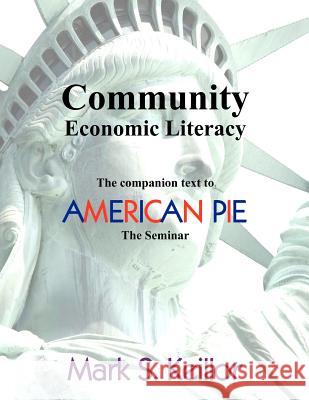Community Economic Literacy: The companion text to American Pie, the Seminar » książka
Community Economic Literacy: The companion text to American Pie, the Seminar
ISBN-13: 9781466473157 / Angielski / Miękka / 2011 / 110 str.
Community Economic Literacy is the companion text to American Pie, the seminar. Our individual fortunes are often connected to the economic health of the places where we live and the groups to which we belong. Community Economic Literacy fills a gap in economics education. Whereas most economics education is based on academic approaches, this is a text that builds on the individual economic experience. It starts with a description and explanation of community and works it way into the processes of building community wealth. It also contains more than 200 illustrations and graphics to demonstrate economic principles and historic trends. Instead of taking an academic approach, the author takes the economic activities of people's every day lives to explain the concepts. The text travels briefly through economic evolution tracing the history of adding value. It starts with a couple paragraphs about the stone age, moves though the development of agriculture, and passes through the Industrial Revolution. It then moves to adding value in the modern era and how that value is maintained in the community by local trading activities and export. The chapters on jobs and the retail industry illustrate how different jobs and enterprises have different impacts on the local economy. Some jobs and some enterprises leak more money out of the community than they bring in. Others, even home based enterprises, can contribute significantly to building community wealth. A chapter is devoted to wealth. A definition of wealth and its importance are highlighted. Here the author discusses wealth distribution and redistribution, the effects of economic stimuli, threats to local wealth, and the roles of local institutions in ensuring community economic health and prosperity. The national scene is also explored. This section includes discussions of national income and wealth sources and a discussion of how wealth has been built in America. National economic leakages, import and export, and global markets are discussed. HIstorical examples are provided. In the AMERICAN PIE chapter, the theme of the book is presented in great detail. Examining the national debt and deficit spending leads to comparing the debt to economic and social trends as well as a presentation on the federal budget and spending. The size of the pie and the number and size of the slices are explained. Community Economic Literacy wraps up by looking at some new economic and social trends with suggestions on how individuals and businesses can start to make their own economic impacts at the local level.
Zawartość książki może nie spełniać oczekiwań – reklamacje nie obejmują treści, która mogła nie być redakcyjnie ani merytorycznie opracowana.











